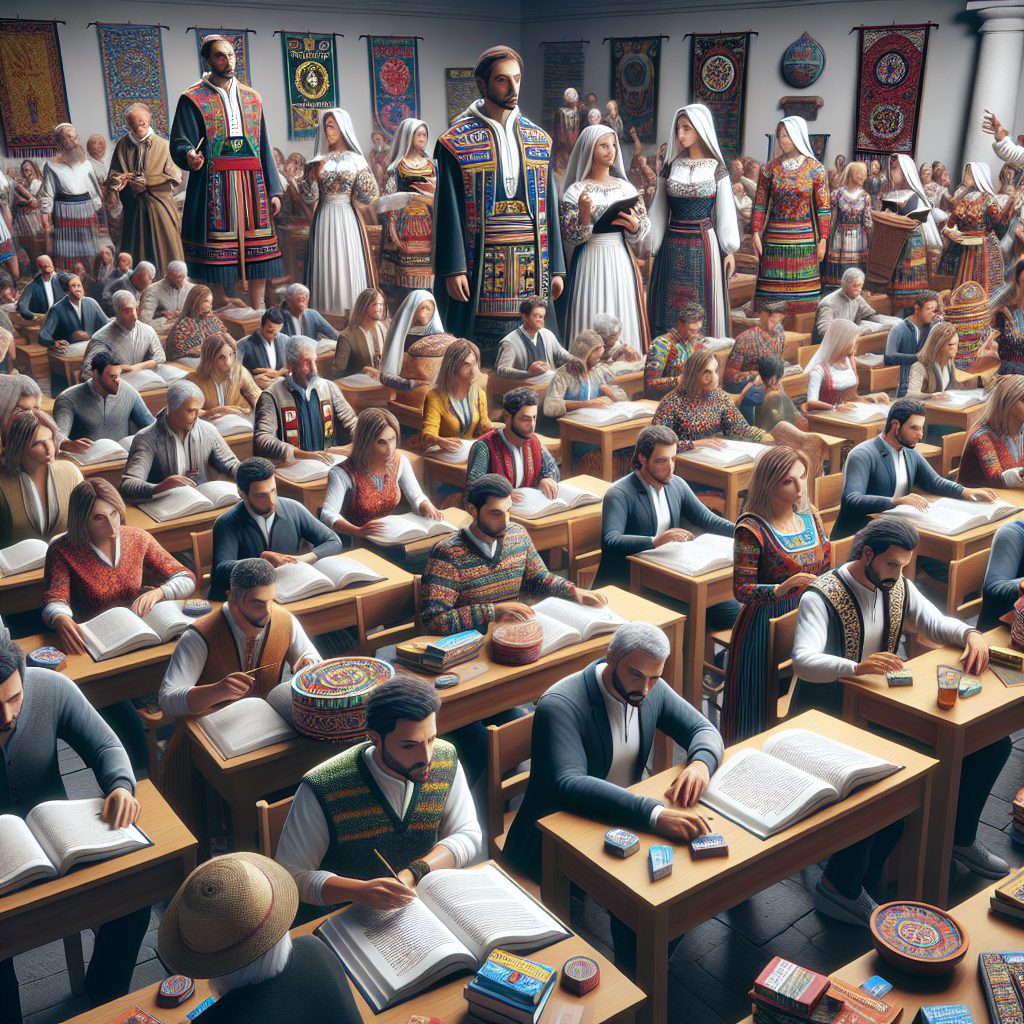Sardinian language vitality refers to the current state and level of preservation of the Sardinian language, spoken on the Italian island of Sardinia. With a history dating back thousands of years, Sardinian is considered one of the oldest Romance languages. It is linguistically distinct from Italian and retains unique features derived from its ancient roots.
One of the factors contributing to the vitality of the Sardinian language is its integration into daily life on the island. Unlike some other regional languages in Italy that have experienced a decline in usage, Sardinian maintains a strong presence in various aspects of Sardinian society. Although Italian is the official language, Sardinian is widely spoken in homes, schools, and among friends and family. This daily use helps to preserve the linguistic tradition and fosters a sense of cultural identity among the Sardinian people.
Moving forward, this article will delve into the key takeaways regarding the vitality of the Sardinian language. We will explore the impact of its status as a minority language, the efforts to promote its use and preservation, and the challenges it faces in an increasingly globalized world. Understanding these aspects will provide valuable insights into the importance of language preservation and the uniqueness of the Sardinian linguistic heritage.
Key Takeaways
1. The Sardinian language, spoken by the Italian island of Sardinia’s inhabitants, faces challenges in maintaining its vitality due to cultural, social, and political factors.
2. The prevalence of Italian language, globalization, and emigration contribute to the decline of Sardinian, with younger generations showing a decreasing proficiency and usage of the language.
3. Efforts are being made to revitalize Sardinian, including the establishment of language schools, festivals, and online resources, as well as legislative measures recognizing and protecting the linguistic rights of Sardinian speakers.
4. Educational policies and the media play a crucial role in promoting and preserving Sardinian, but there is a need for increased support and engagement from the local community, as well as a broader recognition of Sardinian’s value as an essential part of the island’s cultural heritage.
5. Sardinian language vitality depends on a multifaceted approach that includes individual commitment, governmental support, and international recognition to ensure its survival and continuation in the face of linguistic assimilation and globalization.
Is Sardinian Language Vitality Declining? Unveiling the Current State of Sardinian Language
The Importance of Language Vitality
In today’s globalized world, language vitality plays a crucial role in preserving cultural heritage and fostering linguistic diversity. Sardinian, an ancient Romance language spoken on the Italian island of Sardinia, is a testament to the rich linguistic heritage of the region. This article delves deep into the factors affecting the vitality of the Sardinian language, shedding light on its current state.
Historical Significance of Sardinian Language
Before diving into the vitality of the Sardinian language, it’s essential to understand its historical significance. Sardinian is one of the oldest Romance languages still in use today, with roots dating back to the Middle Ages. Its unique phonetics, vocabulary, and grammar reflect the island’s distinct cultural identity.
Current Challenges Facing Sardinian Language
Despite its historical importance, Sardinian faces numerous challenges in maintaining its vitality. One key factor is the dominance of the Italian language, which has gradually supplanted Sardinian in various domains, including education, administration, and media.
Furthermore, societal attitudes and stereotypes towards Sardinian speakers have led to the devaluation and stigmatization of the language. This has contributed to a decline in intergenerational transmission, with younger generations opting for Italian or other dominant languages.
The lack of standardization and limited resources available for Sardinian language instruction also pose significant obstacles. Without proper institutional support, the language struggles to adapt to modern technological advancements and face the demands of the digital era.
Efforts towards Language Revitalization
Despite these challenges, various initiatives and organizations are striving to revitalize and promote the use of the Sardinian language. Local grassroots movements, cultural associations, and language schools are working tirelessly to raise awareness and educate younger generations about the importance of preserving their linguistic heritage.
Additionally, government efforts, such as implementing bilingual education programs and recognizing Sardinian as an official regional language, are steps towards ensuring its survival and vitality.
Tips for Preserving Sardinian Language Vitality
- Encourage the use of Sardinian within families and communities.
- Support local language schools and cultural associations dedicated to Sardinian language promotion.
- Advocate for the inclusion of Sardinian in educational curricula at all levels.
- Develop digital resources, such as Sardinian language apps and online dictionaries, to bridge the gap between tradition and technology.
- Organize cultural events and festivals that celebrate Sardinian language and culture.
- Promote positive attitudes towards Sardinian speakers and challenge language stereotypes.
- Collaborate with linguists and researchers to standardize and modernize the language.
Frequently Asked Questions
1. Is the Sardinian language still spoken today?
Yes, the Sardinian language is still spoken by a significant number of people on the island of Sardinia, Italy.
2. How many people speak Sardinian?
Approximately 1.2 million people can speak Sardinian, making it one of the most widely spoken minority languages in Europe.
3. Is Sardinian considered an official language?
No, Sardinian is not recognized as an official language in Italy. However, it has been recognized as a “protected language” by the regional authorities of Sardinia.
4. Is Sardinian language considered endangered?
Yes, the Sardinian language is considered endangered by UNESCO. It is classified as a “definitely endangered” language, meaning that it is no longer being acquired by children as their mother tongue.
5. What are the main factors contributing to the decline of Sardinian language?
The main factors contributing to the decline of the Sardinian language include the dominance of Italian as the official language, urbanization, and globalization. These factors have led to a decrease in intergenerational transmission and limited opportunities for its use in various domains.
6. Are there any efforts to preserve the Sardinian language?
Yes, there are ongoing efforts to preserve and promote the Sardinian language. Various organizations, cultural associations, and academic institutions are working towards its revitalization through education, cultural programs, and awareness campaigns.
7. Can tourists learn and use Sardinian language?
Yes, tourists are welcome to learn and use the Sardinian language during their visit to Sardinia. Locals appreciate the effort and it can enhance the overall cultural experience.
8. What is the linguistic status of Sardinian within the European Union?
Sardinian is recognized as one of the official languages of the European Union under the European Charter for Regional or Minority Languages.
9. Are there any Sardinian language media outlets?
Yes, there are several Sardinian language media outlets, including newspapers, radio stations, and online platforms dedicated to promoting and preserving the language.
10. How can I contribute to the preservation of the Sardinian language?
You can contribute to the preservation of the Sardinian language by supporting local cultural initiatives, learning and using the language, and raising awareness about its importance to others.
Final Thoughts – Sardinian Language Vitality
The Sardinian language, with its rich history and unique linguistic features, is an integral part of the cultural heritage of Sardinia. While it is facing challenges in terms of its vitality, efforts are being made to ensure its preservation and revitalization. The recognition of Sardinian as a protected language and its recognition within the European Union are positive steps towards its promotion. However, sustained support and involvement from individuals, communities, and institutions are crucial for the long-term survival of the language.
By embracing the Sardinian language, appreciating its distinctiveness, and promoting its use in various domains, we can contribute to its vitality and help safeguard an important aspect of Sardinian identity. It is through collective efforts that we can ensure the continued existence and flourishing of the Sardinian language for future generations to come.






